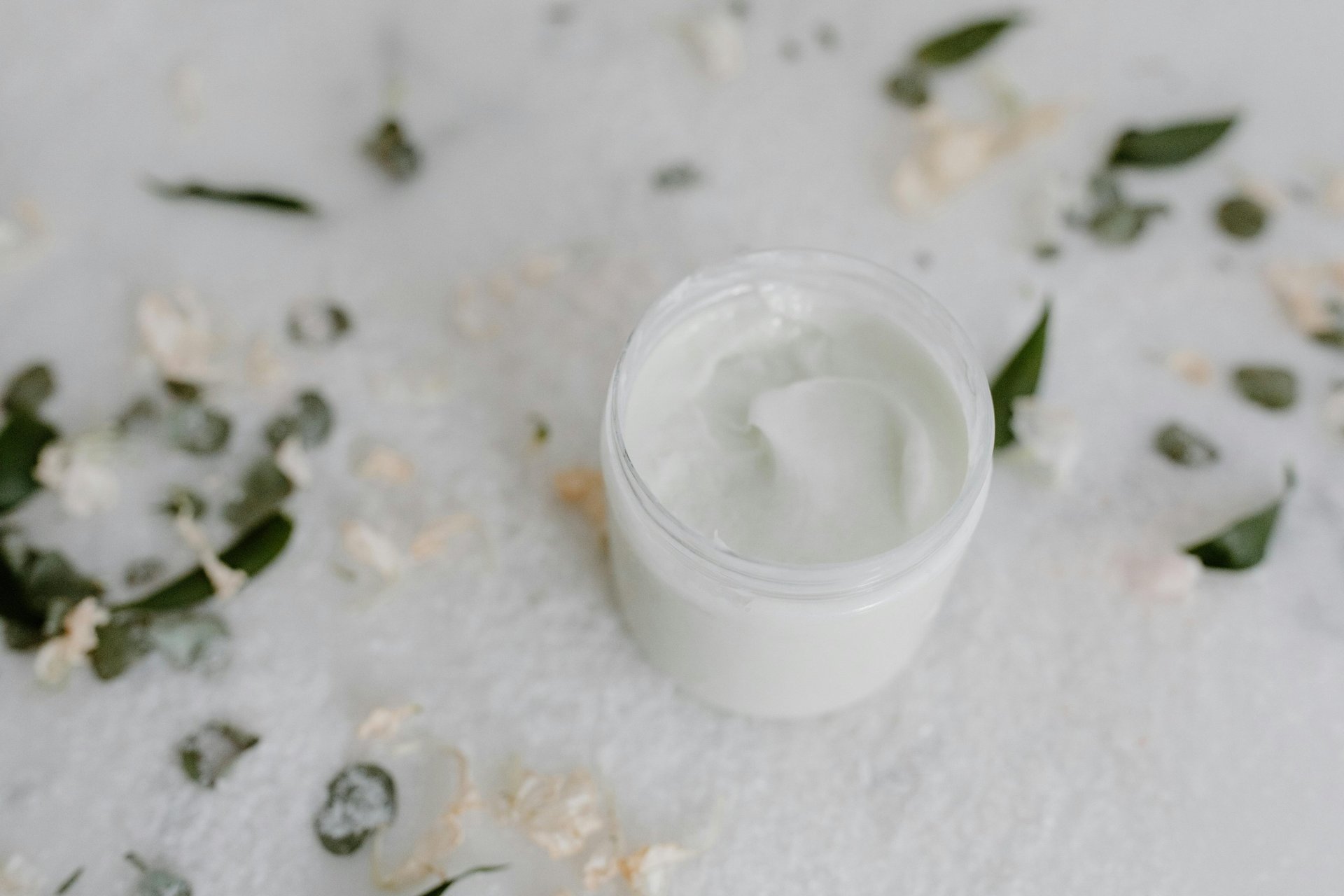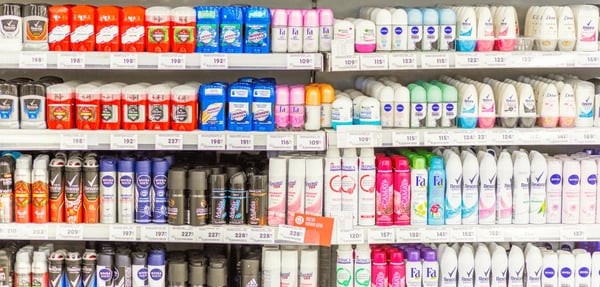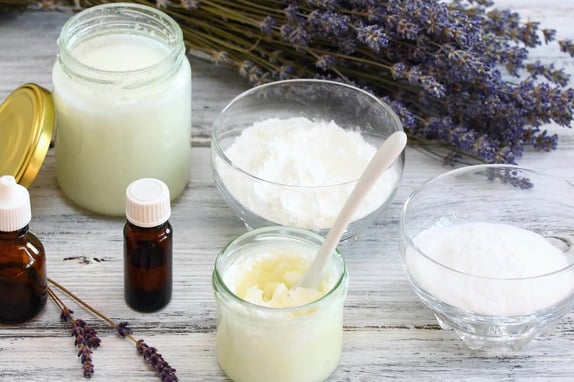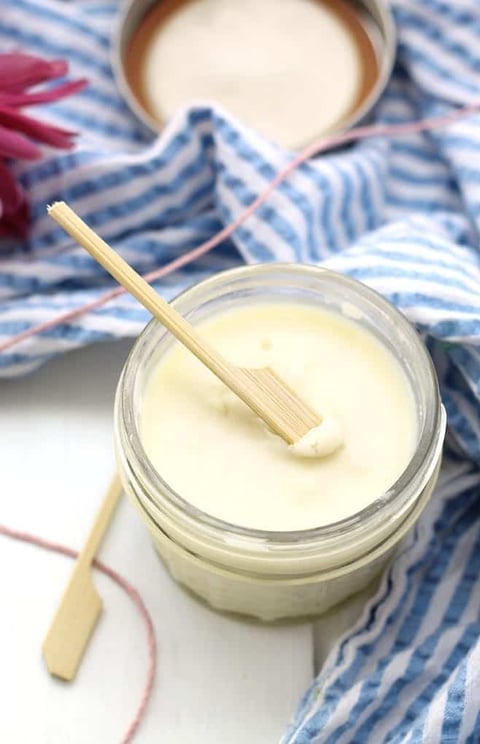
Ditch the Chemicals: How I Made the Switch to Natural DIY Deodorant - Works Better Than Store-Bought
Discover the secret to ditching store-bought deodorants packed with questionable ingredients and embrace a natural alternative that actually works. This simple DIY deodorant recipe blends clean, effective ingredients to keep you fresh all day long—even on the sweatiest days!
HEALTH
1/19/20255 min read
Ditch the Chemicals: How I Made the Switch to Natural Deodorant That Works Better Than Store-Bought
Every other day, it feels like there’s a new headline about how some everyday product we’ve trusted for years is packed with harmful ingredients. I remember the moment I started to realize this for myself—it was about seven years ago when I moved to Europe.
One of the first things I noticed while shopping for basics, like deodorant, was how many products were labeled “0% aluminum.” At first, I didn’t think much of it, but then curiosity got the better of me. Why was this a selling point? What was the deal with aluminum?
When I was back in the U.S. visiting family, I was at the store and flipped over the deodorants I’d been using for years to see the label, and there it was: aluminum chloride, aluminum chlorohydrate, or some other aluminum compound in every single one. Turns out, aluminum is added to stop sweating by clogging your sweat glands—yes, literally clogging them! I also learned there are concerns about aluminum being linked to hormone disruption and other potential health risks. While the science isn’t 100% settled, I didn’t like the idea of slathering it on my skin daily.
That alone made me rethink my deodorant choices, but honestly, the real deal-breaker was something else: these store-bought deodorants didn’t even work. Whether they contained aluminum or not, by midday, I’d be worrying about odor or having to reapply multiple times. And you know, spraying a flowery smell on sweat just does not make it better. It was beyond frustrating!
I decided to start looking for natural alternatives. I tried a few “natural” deodorants from the store, but they were pricey and didn’t work much better than what I’d been using. That’s when I started experimenting with DIY deodorant recipes.
At first, I thought that there would be no way that a DIY deodorant could effectively remove the smell, but after a bit of trial and error, I landed on a recipe that worked better than anything I’d ever bought. It’s not hard to make at all and once you buy the ingredients, you can use them again and again which make it very cost effective!
Now, six or so years later, this DIY deodorant is my ride-or-die. It’s simple, affordable, and best of all—it actually works, even on the sweatiest days.
Why Go Natural?
Switching to a natural deodorant isn’t just about cutting out questionable ingredients like aluminum. It’s about letting your body do what it’s supposed to do: sweat. Sweating is your body’s natural way of regulating temperature and getting rid of toxins, so why block that process?
Instead of stopping sweat, natural deodorants like this one focus on:
Neutralizing odor (because let’s be real, that’s the main concern).
Absorbing moisture without clogging your pores.
Caring for your skin with gentle, natural ingredients.


The benefits of these natural ingredients speak for themselves!
Unrefined Coconut Oil
Antibacterial Properties: Coconut oil is rich in lauric acid, which helps kill odor-causing bacteria.
Moisturizing: It hydrates and soothes the delicate skin under your arms, making it ideal for those prone to irritation.
Natural Base: Acts as a carrier for other ingredients and helps blend them into a smooth, spreadable consistency.


Unrefined Shea Butter
Skin-Soothing: Shea butter is packed with vitamins A and E, which help repair and nourish the skin, reducing irritation.
Moisturizing: Provides deep hydration, preventing dryness caused by baking soda or environmental factors.
Anti-Inflammatory: Its natural anti-inflammatory properties make it great for soothing sensitive or freshly-shaved skin.
Arrowroot Starch
Moisture Absorption: Helps absorb sweat and keeps your underarms feeling dry without clogging your pores.
Gentle on Skin: Unlike harsher ingredients, arrowroot is non-irritating and safe for sensitive skin.
Silky Texture: Adds a smooth, lightweight feel to the deodorant, making it easy to apply.
Baking Soda
Odor Neutralizer: Baking soda is highly effective at neutralizing odors caused by bacteria.
Balancing pH: It helps maintain a balanced pH level under your arms, reducing the growth of odor-causing bacteria.
Small Amount Used: Limiting the amount used ensures it’s gentle on the skin, minimizing potential irritation.
Essential Oils
Natural Fragrance: Provides a pleasant, customizable scent that keeps you feeling fresh. Popular choices include lavender (calming), citrus (uplifting), or eucalyptus (refreshing).
Antibacterial Properties: Many essential oils, like lavender, lemon, or eucalyptus, have antibacterial effects, which help fight odor-causing bacteria.
Tea Tree Essential Oil
Potent Antibacterial: Tea tree oil is a powerhouse for killing bacteria, making it especially effective in a deodorant.
Anti-Fungal: It also combats fungi, ensuring your underarms stay clean and odor-free.
Healing: Tea tree oil can soothe minor cuts or irritation, perfect for post-shave care.
Why This Combination Works
This recipe balances odor control, moisture absorption, and skin care. The coconut oil and shea butter ensure your skin stays hydrated and soothed, while baking soda and arrowroot starch tackle odor and sweat. Essential oils add a refreshing scent and antibacterial boost, while tea tree oil can provide extra protection 🙂


Without further Ado, My Go-To DIY Deodorant Recipe
Ingredients:
2 1/2 tbsp unrefined coconut oil
2 1/2 tbsp unrefined shea butter
1/4 cup arrowroot starch
1 1/2 tbsp baking soda (try half the dose if you have sensitive skin)
10–15 drops of essential oil
Optional: 1 drop tea tree essential oil*
*Optional ingredient since tea tree may be a skin irritant for some people.
Instructions:
Place the coconut oil and shea butter in a glass bowl or jar, then set the bowl or jar inside a medium-sized saucepan.
Add enough water to the saucepan to surround the bowl or jar without overflowing, and bring the water to a gentle boil.
As the water heats, stir the coconut oil and shea butter occasionally, continuing until both have fully melted.
Once melted, turn off the heat and stir in the arrowroot starch, baking soda, and essential oils until well combined.
Transfer the mixture into a small glass jar or even better, empty deodorant stick(s).
Let it cool and harden at room temperature, or place it in the fridge to speed up the process.
Once it has solidified, cover the container with a lid until ready to use.
Directions for Use:
Slightly dampen your underarms for easier and more even application.
Scoop out a pea-sized amount using a wooden spoon or your fingers. Rub it between your fingers to warm it up, then apply directly to your underarms.
For a regular day, one morning application should suffice. On hotter days, during workouts, or if you’re particularly sweaty, reapply as needed.
My Natural Deodorant Journey
Switching to natural deodorant wasn’t without its challenges. There’s a transition period where your body adjusts to sweating naturally again, and I won’t lie—it can be a little rough. But I stuck it out, and after a couple of weeks, I started noticing the difference.
This DIY deodorant works so much better than anything I’d been buying, and I love knowing exactly what’s in it. Plus, it’s ridiculously affordable. I’ve saved so much money over the years by making my own.
The best part? It’s empowering. There’s something so satisfying about taking control of your health and making a product that works better than the expensive, chemical-filled options at the store.


Ready to Give It a Try?
If you’re tired of ineffective store-bought deodorants or you’re ready to ditch the questionable ingredients, this DIY recipe is a game-changer. It’s simple, clean, and it actually works—even on sweaty days.
Have you tried making your own deodorant before? Or are you curious to start? Reach out to me—I’d love to hear your thoughts or help you get started!
